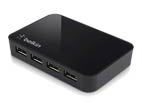Are new PCs on the enterprise Christmas list this year? In fact, they probably are, although likely targeted for highly specific functions like database applications and graphics design rather than for simple email and Web surfing.
The good news for PC manufacturers, however, is that the steady slide in PC sales looks like it is easing up a bit, particularly among professional users. According to IDC, the PC market dropped another 10 percent over the past year, but is expected to fall only another 3.8 percent in 2014 to about 300 million units. That is expected to be the new normal for the PC business, which is a far cry from years past but still represents healthy-enough performance to sustain a viable industry. Even more telling is the fact that much of the drop is attributed to weakening consumer demand. The corporate market is only down 5 percent for 2013 and could even turn positive in the coming year as organizations upgrade the installed base of Windows XP machines.
And on the media circuit at least, the top PC vendors aren’t shying away from the PC just yet. Michael Dell, for instance, recently described the PC as a key element in the company’s growth strategy and said he anticipates increasing the company’s market share over the next few years. In many cases, he said, the PC is the wedge product that leads to more advanced enterprise infrastructure like servers and centralized storage.
HP is already seeing some life in its enterprise PC business. The company reported a 4 percent gain for the past year, even as sales of consumer machines fell 10 percent. Top execs say the primary task going forward is to develop machines that can more easily adapt to emerging converged infrastructure platforms, namely its own ConvergedSystem portfolio that was announced just last week. In all likelihood, that means the development of an advanced communications architecture that allows the PC to interact directly with a more flattened, fabric-style infrastructure rather than through a single server to the silo-based environment that exists today.
This notion of a new PC for a new enterprise environment is not HP’s alone. Earlier this year, Cisco unveiled its version of the new enterprise desktop, more of a souped-up telephone really, that the company says provides all the tools needed for modern, collaborative workflows. These tools include an Android-based phone module, 1080p video support, and direct connection to both on-premise and public cloud data and applications. The device utilizes Texas Instruments’ 4460 OMAP (Open Multimedia Applications Platform) processors and sports 8GB of Flash memory and 1GB of RAM, a testament to Cisco’s expectation that more and more of the PC infrastructure, like storage and higher-order processing, will be hosted in the cloud.
Some may quibble over whether such a device can be called a desktop or a PC, but the fact remains that it is a client endpoint that allows someone to interact with the wider data environment. And as is evident from the rising popularity of tablets and smartphones, not everyone needs hefty processing and loads of storage capacity right in their hands in order to be highly productive.
In all likelihood, then, we are on the cusp of a transition from a PC monoculture in the enterprise to one in which the desktop is only one way to get the job done.



